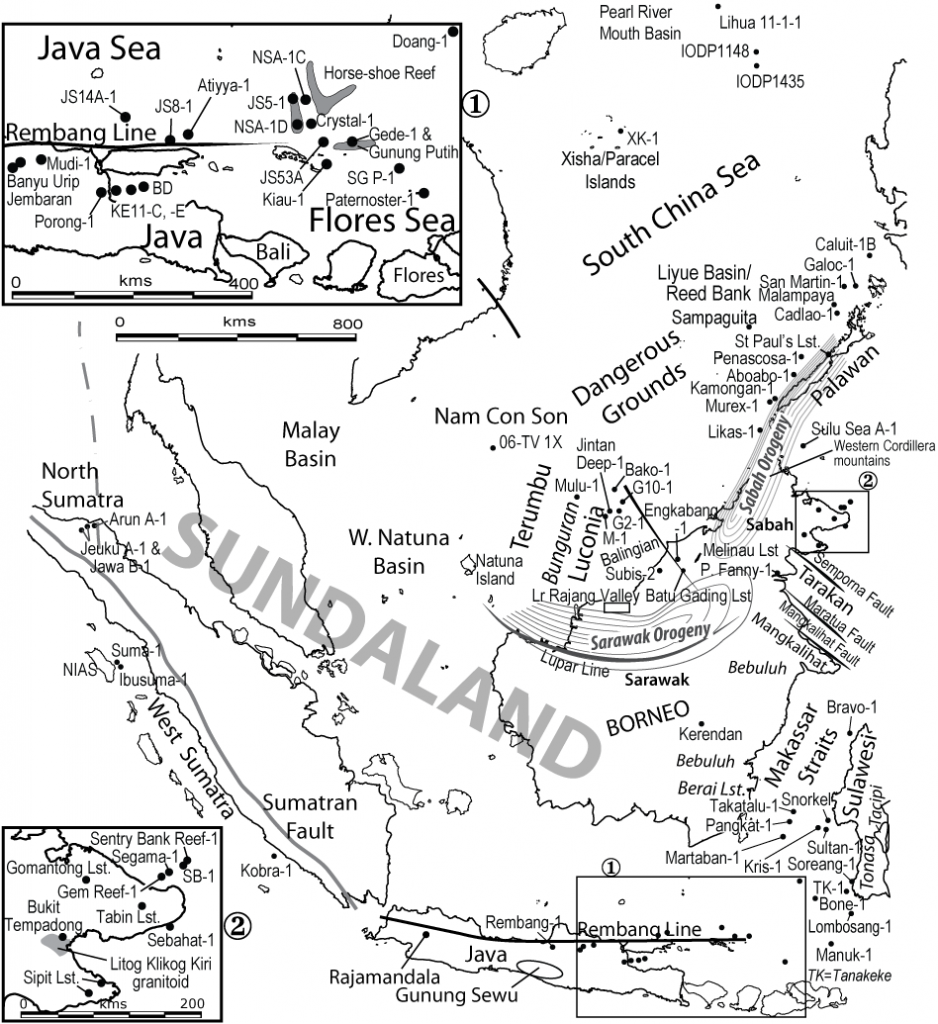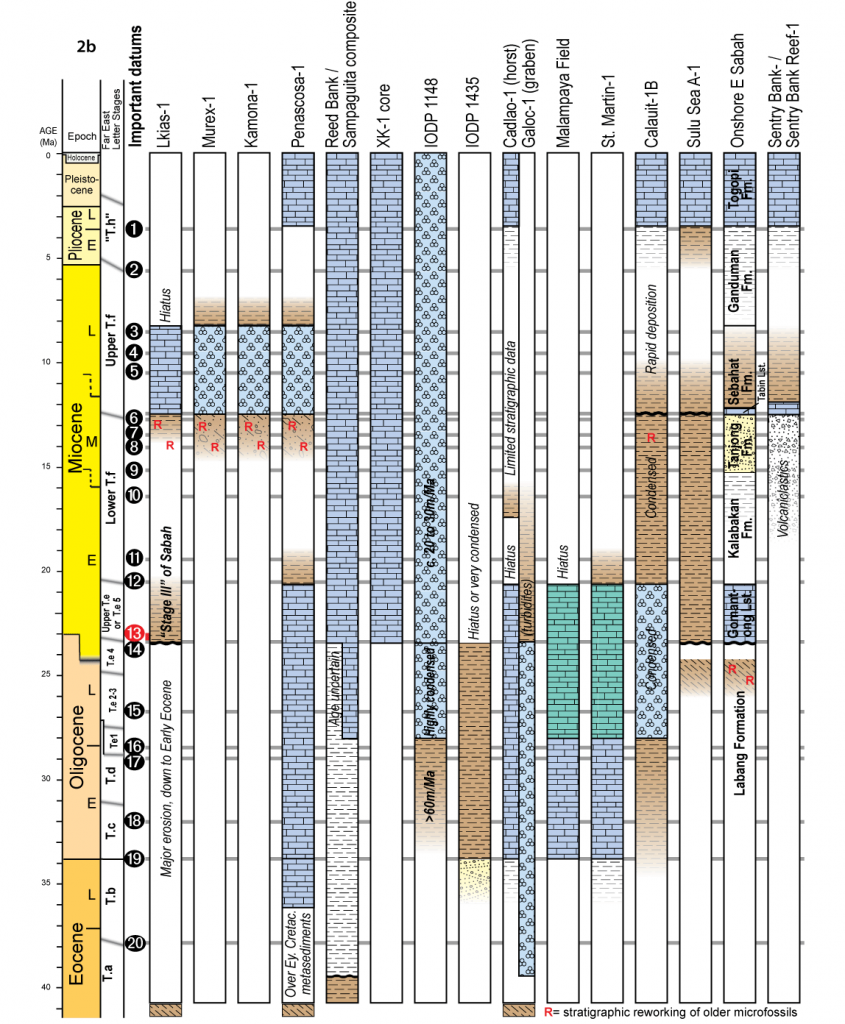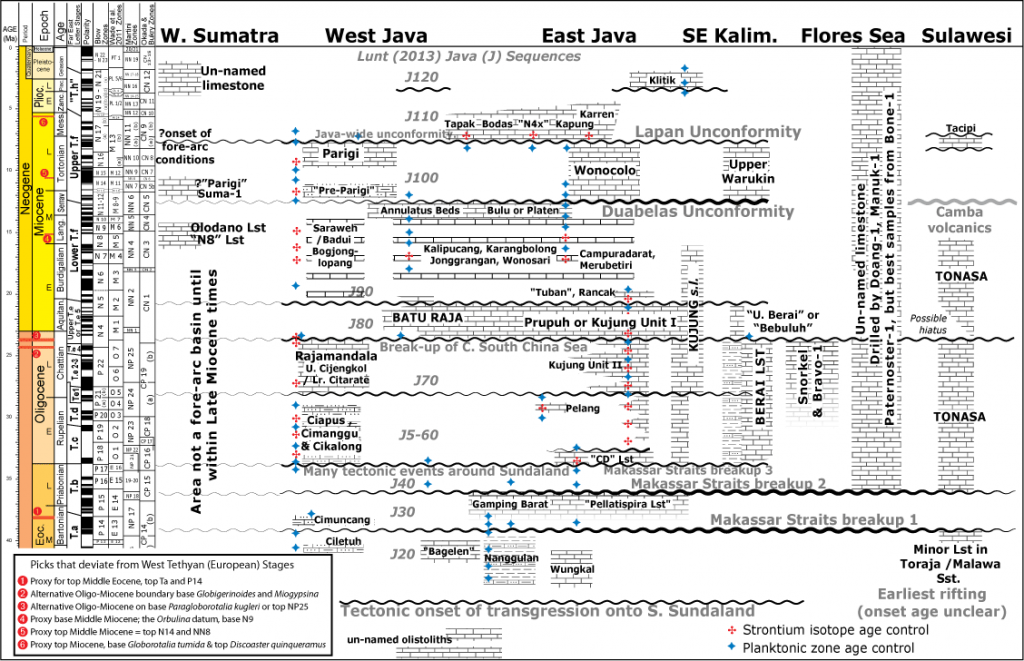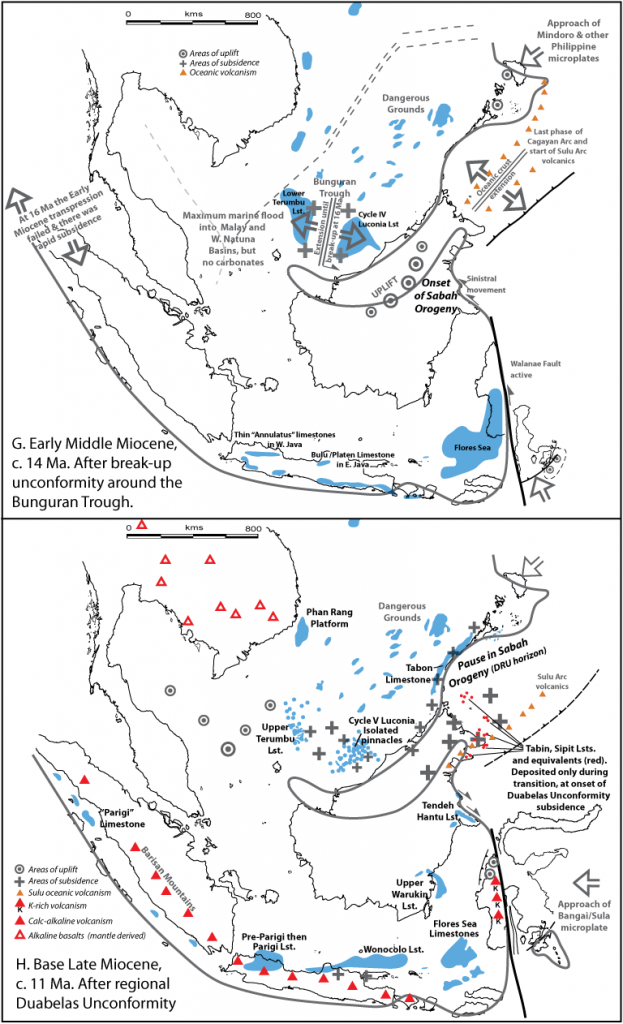Lunt, P., Woodroof, P., 2021. Tectono-stratigraphic controls on Cenozoic SE Asian carbonates. SEPM Special publication, Cenozoic Isolated Carbonate Platforms – Focus Southeast Asia, doi.org/10.2110/sepmsp.114.06
As a “back-room boy” in industry it has long bothered me that leading structural geologists, carbonate sedimentologists and other specialists get such poor stratigraphic advice. This was the first of three papers for an SEPM Special Publication on “Cenozoic Isolated Carbonate Platforms – Focus Southeast Asia” to remedy some of these issues. The others were on Luconia carbonates and the biological evolution of carbonates.
In this regional review, with Peter Woodroof, we attempted to synthesize stratigraphic summaries from across SE Asia based on extensive experience of local data, much of it un-published. Multiple unconformities were associated with the onset and termination of carbonate deposits. This review highlighted the need to get more of the basic data published, which is following in several papers also being published in 2021 or in press.

Southeast Asia is characterised by a series of break-up unconformities from the mid Eocene until later Early Miocene times. This will be explained in a new paper in prep., just remember that SE Asia was subsiding and being transgressed throughout this period, while global sea-levels were falling. From within Early Miocene times compression began, from approaching Philippine and Australian plates, and a different tectonic style began. Within this prolonged period of compression there were at least three events when multiple basins were subject to correlatable transitions, expressed again as unconformities. Consequently the stratigraphy of SE Asia has about eight to ten (depending on location) basic units or episodes of sedimentation that are related to the development of multiple basins.
The paper presents a framework, but some generalizations are suggested. First the break-up unconformities are proposed to be primary correlative events and thereby mega-sequence boundaries. Step-like shifts in facies, from prolonged shallow or non-marine deposition to prolonged bathyal sediments with a single contact or abrupt transition are called non-Waltherian contacts. Under Walther’s Law this sudden re-location of the entire sedimentary system had to affect all sites in the same depocentre as a primary sequence boundary.
The transitions in the compressional phase are noted to be slightly slower and may contain transitional facies, such as rapidly deposited carbonates, some of which are hydrocarbon reservoirs. However regional events such as the Deep Regional Unconformity [DRU; a widely misapplied term so the local name of Duabelas Unconformity is proposed for the Sabah event here] or Shallow Regional Unconformity [SRU; called the Lapan Unconformity here] of northern Borneo and Palawan can be widely correlated to tectonic re-adjustments in Sarawak, Luconia and eastern Java.
The paper is sadly just a summary of a huge topic, but much supporting data is cited, and new publications are filling in the gaps. This is important as the paper tries to offer a synthesis of previous evidence-based works such as the Stages of Sabah, Cycles of Sarawak and similar names units in other basins. This resurrection of old approaches is suggested to be natural and predictive, and should replace the scheme based on idealised models such as eustatic sea-level curves. Such eustatic models have not been successfully applied in SE Asia, but lack of access to un-published local stratigraphic data across all the basins has prevented the emergence of a practical and tested alternative.



Be First to Comment